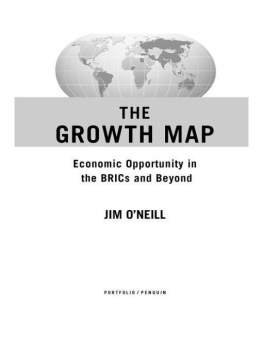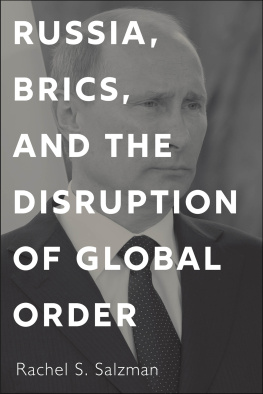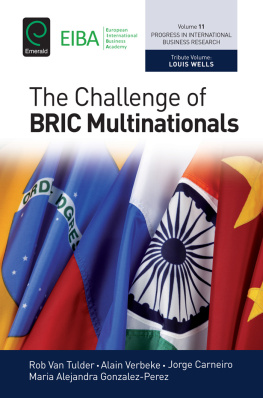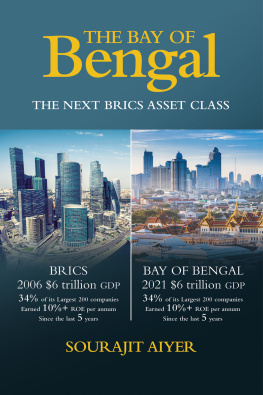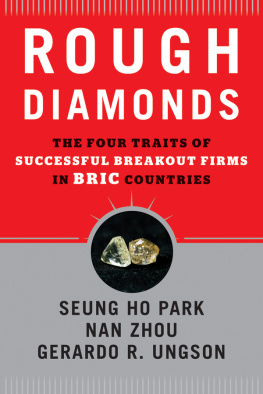Table of Contents
PORTFOLIO / PENGUIN
Published by the Penguin Group
Penguin Group (USA) Inc., 375 Hudson Street,
New York, New York 10014, U.S.A.
Penguin Group (Canada), 90 Eglinton Avenue East, Suite 700,
Toronto, Ontario, Canada M4P 2Y3
(a division of Pearson Penguin Canada Inc.)
Penguin Books Ltd, 80 Strand, London WC2R 0RL, England
Penguin Ireland, 25 St. Stephens Green, Dublin 2, Ireland
(a division of Penguin Books Ltd)
Penguin Books Australia Ltd, 250 Camberwell Road, Camberwell,
Victoria 3124, Australia
(a division of Pearson Australia Group Pty Ltd)
Penguin Books India Pvt Ltd, 11 Community Centre, Panchsheel Park,
New Delhi110 017, India
Penguin Group (NZ), 67 Apollo Drive, Rosedale, Auckland 0632,
New Zealand (a division of Pearson New Zealand Ltd)
Penguin Books (South Africa) (Pty) Ltd, 24 Sturdee Avenue,
Rosebank, Johannesburg 2196, South Africa
Penguin Books Ltd, Registered Offices:
80 Strand, London WC2R 0RL, England
First published in 2011 by Portfolio / Penguin,
a member of Penguin Group (USA) Inc.
Copyright Jim ONeill, 2011 All rights reserved
LIBRARY OF CONGRESS CATALOGING-IN-PUBLICATION DATA
ONeill, Jim.
The growth map : economic opportunity in the BRICs and beyond / Jim ONeill.
p. cm.
Includes bibliographical references and index.
ISBN : 978-1-101-56563-6
1. Economic developmentDeveloping countries. 2. Global Final rncial Crisis, 20082009. 3.
Globalization. I. Title.
HC59.7.O516 2011
338.90091724dc23
2011037891
Without limiting the rights under copyright reserved above, no part of this publication may be reproduced, stored in or introduced into a retrieval system, or transmitted, in any form or by any means (electronic, mechanical, photocopying, recording or otherwise), without the prior written permission of both the copyright owner and the above publisher of this book.
The scanning, uploading, and distribution of this book via the Internet or via any other means without the permission of the publisher is illegal and punishable by law. Please purchase only authorized electronic editions and do not participate in or encourage electronic piracy of copyrightable materials. Your support of the authors rights is appreciated.
http://us.penguingroup.com
To My Family
INTRODUCTION
AUDACIOUS GROWTH
I n the spring of 2008 I booked a surprise twenty-fifth wedding anniversary present for my wife. We were to go trekking to the base camp of Everest in the Himalayas. I had booked the trip for October. Three weeks before we were due to leave, Lehman Brothers, the fourth largest bank in the United States, declared itself bankrupt, triggering a global financial crisis.
At the time I was still the chief economist at the London office of Goldman Sachs, another leading U.S. investment bank. I was torn. Should I go ahead with the trip, which would take me not only out of the office for fourteen days, but also out of contact? From the perspective of the financial industry, the world seemed to be falling apart. After much deliberation, I decided we should still go. If I waited for the world to be without a crisis, I might never take a holiday. And I needed the break. Over the previous weeks I had been working nonstop, including every weekend. Staying in the office would not solve the crisis. Rather, getting away might give me time to reflect, far from all the noise.
On our way to Mount Everest we spent a night in the Nepalese capital, Kathmandu, awaiting the hair-raising flight to Luklas Tenzing-Hillary airport. We were the only diners in our hotels restaurant, so the matre d had time to chat with us through dinner. At one point he mentioned the credit crisis sweeping the globe. To those of us in the West the credit crisis was about the sudden unavailability of loans. But in Nepal, where so much commerce is conducted in cash or barter, this was irrelevant. What concerned our talkative matre d was the relentless rise in energy costs. Subprime mortgage defaults may have been of no interest in Kathmandu, but fuel prices definitely were.
As he spoke, it occurred to me that what mattered to him was almost certainly what mattered to the people of China and India. Provided the price of oil fell back to its previous level, this crisis we all thought of as global would not be global at all, but merely Western. I owe that matre d a large drink for sparking this insight.
As we embarked on our trip to Everest base camp, we came to a small town called Namche Bazaar, perched on the edge of a plateau some 3,800 meters above sea level. Its market serves Everests many climbing parties and all the local trading communities. Tibetan merchants lead thhoueir yaks and donkeys over the high, treacherous mountains to bring their wares for sale. I had read about these adventurous traders, though Id found the stories difficult to believe. But I discovered that, not only did they make the long and arduous trek to Namche Bazaar, they also exchanged information about market conditions on the way using mobile telephones. I was amazed: they were calling each other on a Chinese network from halfway up a Himalayan mountain while I couldnt even get a signal in many parts of the UK.
One of the very last newspaper articles Id read before leaving London claimed that globalization was finished. Yet here before us, high in the Himalayas, I could see one of the greatest modern tools of trade being used by men who at first sight might be described as primitive. Here was a powerful example of how globalization was alive and well. It occurred to me then how narrowly focused many of us can be.
I n 2001 I wrote a research paper in Goldman Sachs Global Economics series that examined the relationship between the worlds leading economies and some of the larger emerging-market e
I thought the global economy in the coming decades would be propelled by the growth of four populous and economically ambitious countries: Brazil, Russia, India and China, and I coined the acronym BRIC from their initials to describe them.
Since then my career has been shaped in large part by that single term. Even then I had stopped thinking of these four economies as traditional emerging markets. Ten years later I am even more eager to convince the world that they, along with some other rising stars, are the growth engines of the world economy, today and in the future.
When the credit crisis erupted in September 2008, many predicted that the BRIC story was over. There were moments I worried about that too. In the immediate aftermath, BRIC equity markets fell more than those of their developed cousins, and it did seem as though global trade might suffer permanent scars. Of course, this fear turned out to be completely unfounded. In some ways, that was when the BRIC thesis really came of age. It withstood the shakings of the worlds economic foundations, and emerged more robust than ever.
My paper did not cause an immediate splash and its main points were not seen as especially profound at the time. Based on my analysis of global GDP, I wrote that four countriesBrazil, Russia, India and Chinawhich then controlled 8 percent of the world GDP, would see their share of the world economy grow significantly in the next decade. I noted that Chinas GDP was already bigger than that of Italy, which was a well-entrenched member of the G7 group of economic superpowers, and over the decade ahead it would start to overtake a number of the other G7 members. Over the next ten years, I predicted, the weight of the BRICsand especially Chinain world GDP would grow quite markedly. The world would have to pay attention.

